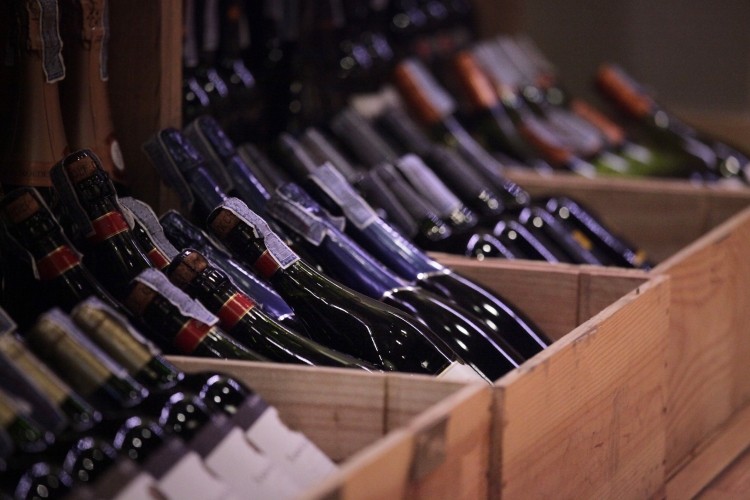Why the future of wine packaging is recycled PET

Having undergone little adaptation since the 17th century, the classic wine bottle is seen amongst many as a tradition to be respected. But the truth is, it’s difficult for current wine packaging to be less efficient than it already is. If we are going to take decisive action to create the sustainable wine trade that the planet needs, sacrifices are going to have to be made.
While environmentally-friendly production practices and bottle shape no doubt play a role in a more sustainable wine industry, perhaps the most decisive thing that can be changed right now is the material used to package the wine.
One promising solution that is starting to gain swing in the wine industry is replacing glass with recycled polyethylene terephthalate (PET) plastic packaging. For the vast majority of wine produced today - that which is made in bulk and for early consumption - recycled PET is a realistic alternative to glass bottles.
Let’s take a deep dive into why producers and consumers alike should consider recycled PET to be a foundational building block of the future of a sustainable wine trade.
But first, what exactly is wrong with the bottles we’ve been using for so long?
Why current packaging fails
They might be pretty to look at and pleasant to pour from, but existing wine bottles lose serious points when it comes to their impact on the environment.
Glass wine bottles are spatially inefficient, shatter easily, and of course - heavy. Their production, transportation, and disposal generates a sizable carbon footprint, and they require extra packaging to transport and deliver without risk of damage - resulting in excess waste.
In fact, research shows that the biggest portion of the carbon footprint incurred by a bottle of wine comes from its packaging, not its transport. The glass bottle alone makes up 39% of the 1.215kg of CO2 emitted by the lifecycle of a single wine bottle.
Even wine experts such as Jancis Robinson are speaking up around the issue. Robinson recently published an article on her website highlighting the environmental impact of the wine industry and the necessity to tackle these issues head on - with much of the effort starting with packaging.
While alternative packaging options have emerged in recent years, including boxes, pouches, and cans, these are ultimately not a feasible solution to the traditional 750ml glass bottle. Most wine-drinking takes place at the dinner table or while sharing a bottle with friends, and a fresh approach to packaging needs to take this into account.
Is recycled PET the sustainable wine bottle’s saving grace?
So, if housing our wine in glass is no longer an option: what is? Right now, recycled PET is looking like the industry’s best bet in creating more sustainable packaging.
When compared to their glass counterparts, virgin PET bottles account for 77% less greenhouse gas emissions, and are around 90% lighter than an average glass bottle of 500g. The CO2 emissions of recycled PET were also found to be 79% lower than for virgin PET material.
Not to mention, PET that is recycled takes other PET materials out of the waste cycle, and is still recyclable itself once used.
The lightweight nature of recycled PET is ideal given the continuing growth of wine ecommerce. Not only will a lighter bottle reduce the carbon footprint of the packages being shipped, but it will also save producers and distributors on costs that were previously spent on sending heavy bottles.
Understandably, many wine lovers will have concerns over the oxidation of the product when contained in plastic packaging - a lack of oxidation is one of the primary benefits of glass, after all.
For the vast majority of wine consumers - those that drink a bottle within six to twelve months of buying it - recycled PET won’t make a difference to the wine. One study conducted on rosé wine compared glass bottles to traditional PET and recycled PET bottles. Researchers found that while there were differences between the aromatic compounds of wine stored in each material, results as to whether or not these differences changed the sensory characteristics of the wines were inconclusive. The researchers recommended that either new or recycled PET can be used to store wines intended for consumption within six months after bottling.
Another similar study found that while white wine starts to oxidize six months after being stored in PET bottles, red wine was unaffected over the same time period. So - to conclude - if the wine is consumed within six months after bottling, it shouldn’t have undergone any serious changes due to oxidation.
Can consumers be convinced?
While such data might work to convince sustainably-minded wine drinkers, there’s no doubt that some traditionalists will remain loyal to the centuries-old glass design. But producers and manufacturers are becoming more aware of this. One company leading the way on creating luxurious-looking recycled PET wine bottles is Garçon Wines.
The team at Garçon Wines have created flat bottles made from recycled PET that still retain the traditional features of a classic wine bottle: The round shape and long neck. The company has also tackled the lack of transparency in recycled PET by coloring the bottles to disguise the cloudiness. Rosé wines are packaged in pink-tinted bottles, while bottles for reds and whites are colored olive green. At first glance, Garçon Wines’ bottles look remarkably similar to the ones we’re used to.
The bottles are also 100% recyclable after use, and each bottle saves more than 500g of CO2 across the supply chain thanks to their innovative shape and material.
There’s no doubt that moving towards more sustainable wine packaging by making the swap to recycled PET has to come first from the wine producers themselves. But there’s also work to be done on the part of the customer as part of a wider demand for sustainably-made products.
As so many industries have shown us, impactful change doesn’t happen until it’s demanded on a mass scale. Winemakers will only create change in their bottling processes when they are safe in the knowledge that the majority of their buyers will truly embrace wine in a PET bottle. But as conscious consumerism starts to take hold in the wine industry, wine companies that adopt sustainable packaging are sure to see a positive impact in their sales.
Emilie Steckenborn has cultivated her career as a Certified Educator from WSET, Certified Sommelier from CMS, HEG Certificate from Cordon Bleu, and is currently a Master of Wine Candidate. As Head of Education Asia & MEIA, she develops programs for front line staff across China, where her team trains thousands of drink enthusiasts across Asia. She currently serves as China Eastern Airlines Official Wine Consultant for First and Business Class and Her podcast Bottled In China reached over 25K listeners.








